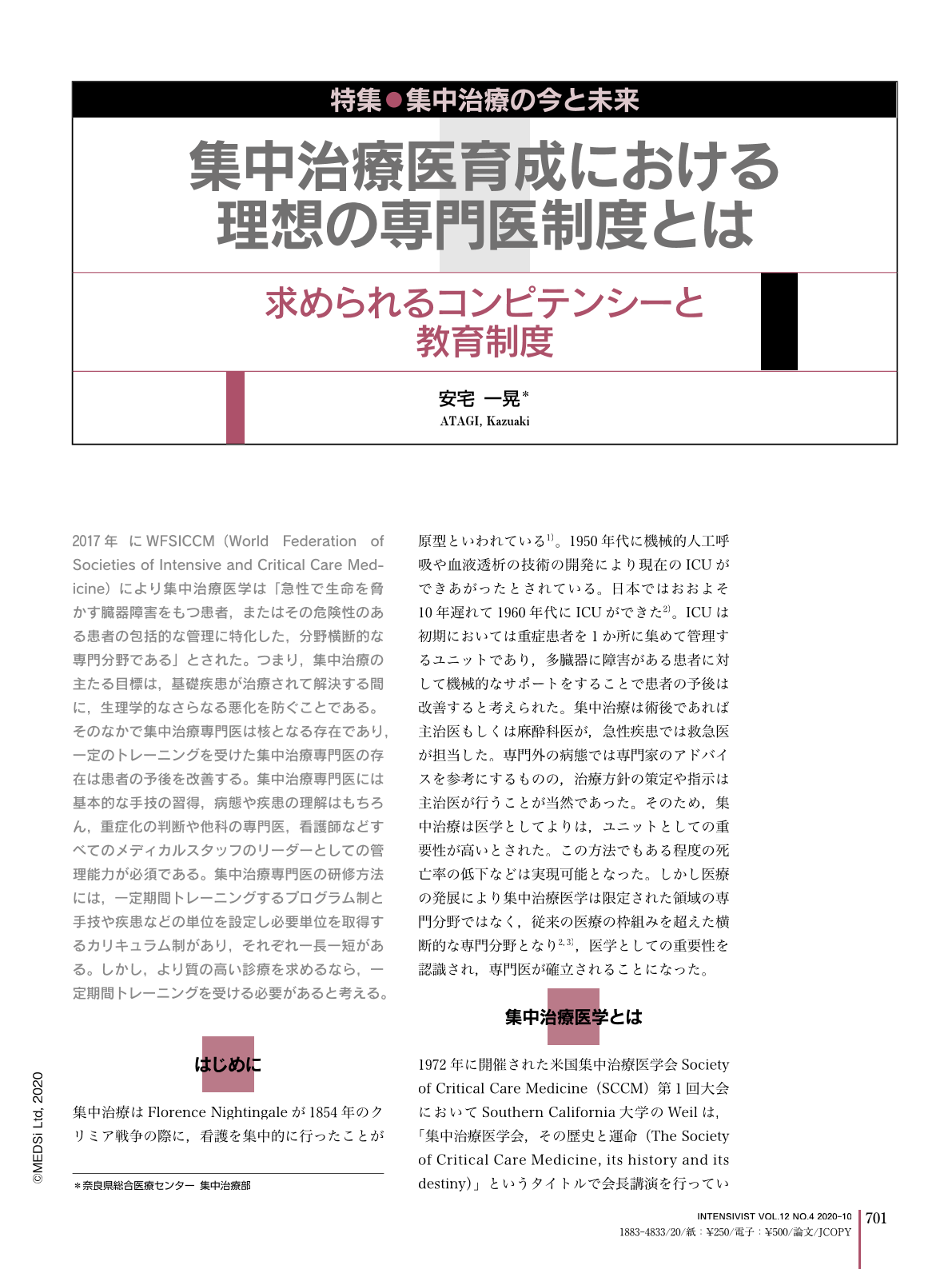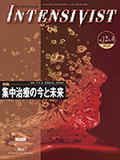Japanese
English
- 有料閲覧
- Abstract 文献概要
- 1ページ目 Look Inside
- 参考文献 Reference
2017年にWFSICCM(World Federation of Societies of Intensive and Critical Care Medicine)により集中治療医学は「急性で生命を脅かす臓器障害をもつ患者,またはその危険性のある患者の包括的な管理に特化した,分野横断的な専門分野である」とされた。つまり,集中治療の主たる目標は,基礎疾患が治療されて解決する間に,生理学的なさらなる悪化を防ぐことである。そのなかで集中治療専門医は核となる存在であり,一定のトレーニングを受けた集中治療専門医の存在は患者の予後を改善する。集中治療専門医には基本的な手技の習得,病態や疾患の理解はもちろん,重症化の判断や他科の専門医,看護師などすべてのメディカルスタッフのリーダーとしての管理能力が必須である。集中治療専門医の研修方法には,一定期間トレーニングするプログラム制と手技や疾患などの単位を設定し必要単位を取得するカリキュラム制があり,それぞれ一長一短がある。しかし,より質の高い診療を求めるなら,一定期間トレーニングを受ける必要があると考える。
In 2017, “Critical care medicine is a comprehensive, specialized, multidisciplinary specialty for patients with, or at risk of, acute, life-threatening organ damage.” In other words, the primary goal of critical care medicine is to prevent further deterioration of physiologic function while the underlying disease is being treated and resolved. The intensivist is a core part of this process, and the presence of a trained intensivist improves the patient's prognosis. It is essential that intensivists have an understanding of basic techniques, pathology and disease, as well as the ability to determine the severity of illness and to lead and manage medical staff, including other specialists and nurses. There are two types of training methods for intensivists:one is program-based training in which trainees are trained for a certain period of time, and the other is curriculum-based training for which credits are given according to technique and disease. However, it is necessary to undergo training for a certain period of time if the goal is to achieve higher quality care.

Copyright © 2020, MEDICAL SCIENCES INTERNATIONAL, LTD. All rights reserved.


